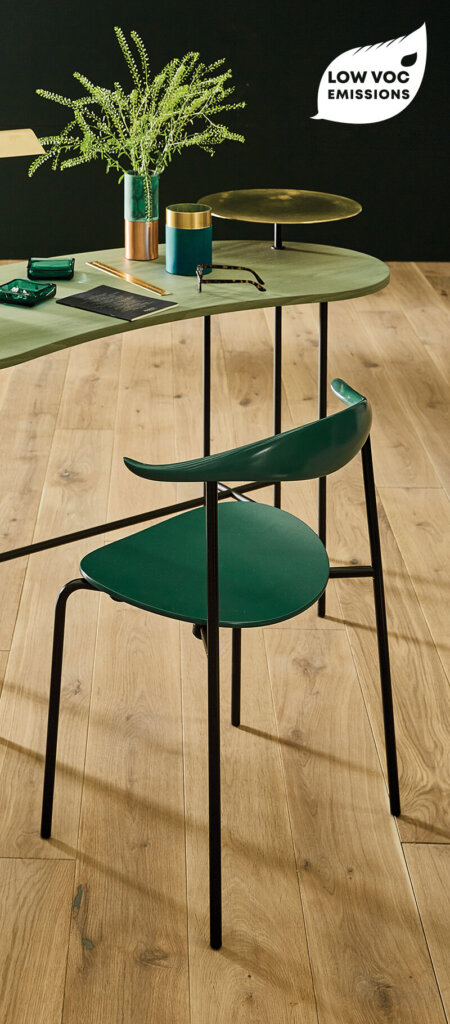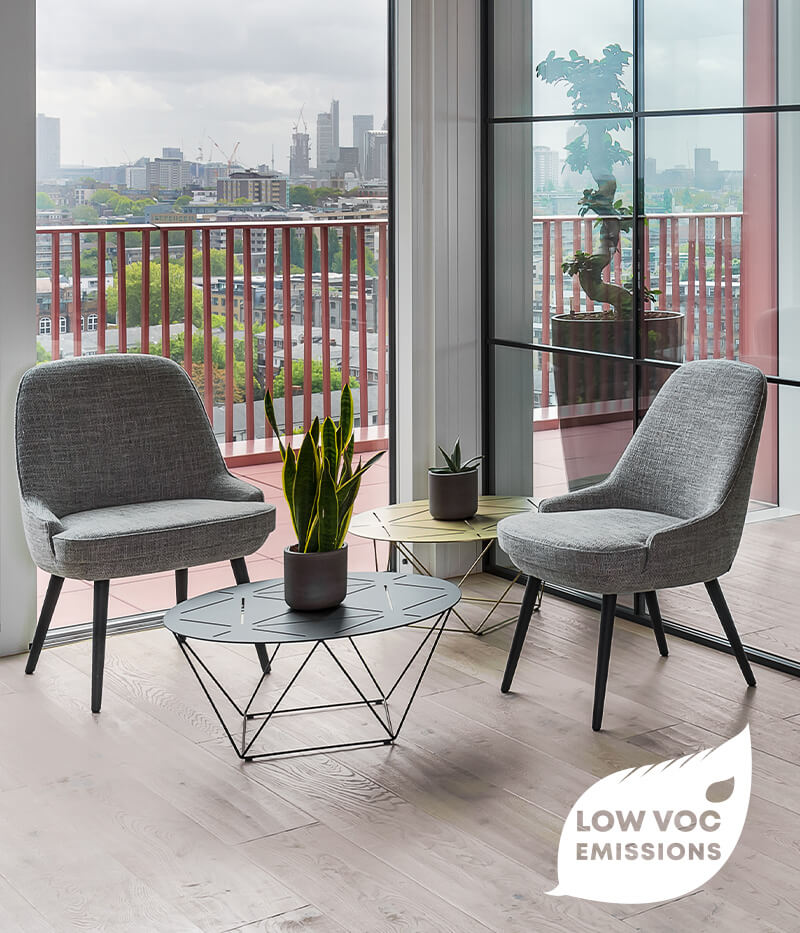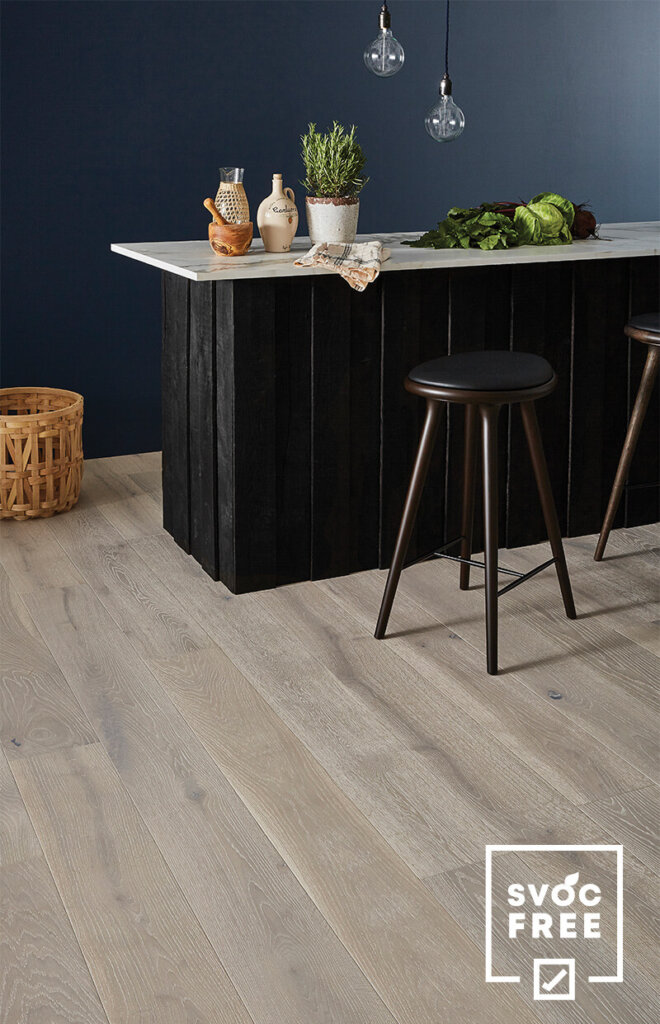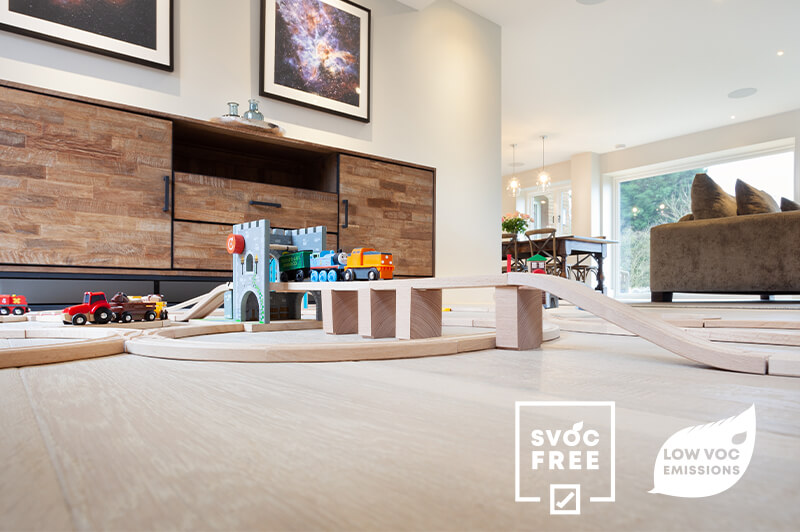With sustainability now a mainstream concern, attention has naturally begun to shift towards considering the effects manmade products have, not only on the environment but on our own health and well-being.
The long-term serious exposure to chemicals used in the manufacturing process of products used in our homes and commercial spaces is not yet fully understood. However, preliminary research into the effects of indoor air quality has confirmed that inside pollutants do exist and have a negative effect on people’s health.

WHAT DOES VOC MEAN?
Volatile organic compounds (VOCs) are gases deemed harmful to humans. VOC emissions are released from most building materials, paint, furniture, and furnishings such as carpet. Air quality is affected by these emissions, so it is essential to minimise exposure to them.
WHAT IS THE DIFFERENCE BETWEEN SVOC AND VOC?
SVOCs are semi-volatile organic compounds and omitted mainly from manmade products, which includes furnishings such as LVT and Vinyl. A noticeable difference between VOCs and SVOCs is the smell, as VOCs have an aroma when released. SVOCs, on the other hand, don’t create a smell, instead, they evaporate off a variety of household products and accumulate over time in things like household dust.
HOW DO VOCs AND SVOCs EFFECT YOUR HEALTH?
Research into the adverse health effects of SVOCs is still at an early stage but links are now being made between these molecular airborne pollutants and many existing health and well-being issues.
According to a recent Duke University-led study, ‘children living in homes with all vinyl flooring or flame-retardant chemicals in the sofa have significantly higher concentrations of potentially harmful semi-volatile organic compounds (SVOCs) than children from homes where these materials are not present.’
In fact, ‘children from homes that had vinyl flooring in all areas were found to have concentrations of benzyl butyl phthalate metabolite in their urine that were 15 times higher than those in children living with no vinyl flooring. Exposure to benzyl butyl phthalate has been linked to respiratory disorders, skin irritations, multiple myeolma and reproductive disorder.’

THE BENEFITS OF LOW VOC AND SVOC FREE FLOORING
Natural, organic and non-toxic flooring, such as wood, can have a massive impact on indoor air quality. Opting for eco-friendly natural flooring is a great place to start if you want to minimise the short and long-term adverse health affects you might experience if you opted for a man-made alternative. It’s also the best option for the environment!
CERTIFICATION – LOW VOC AND SVOC FREE
At Ted Todd, we are very proud to display the ‘SVOC FREE’ logo on all of our wood-based products.
All our products are also Low VOC and contain no PVC, making us a trustworthy and healthy choice for your project.
To find out more and understand why you should make the switch to SVOC Free flooring today visit our website or contact a member of our team on 01925 283000.

